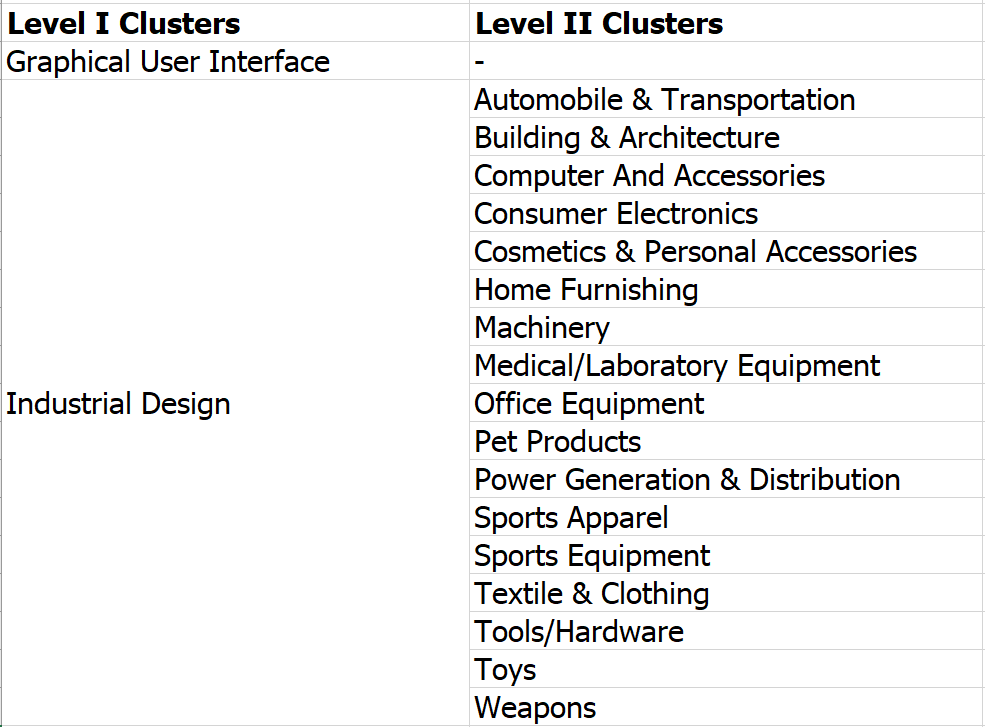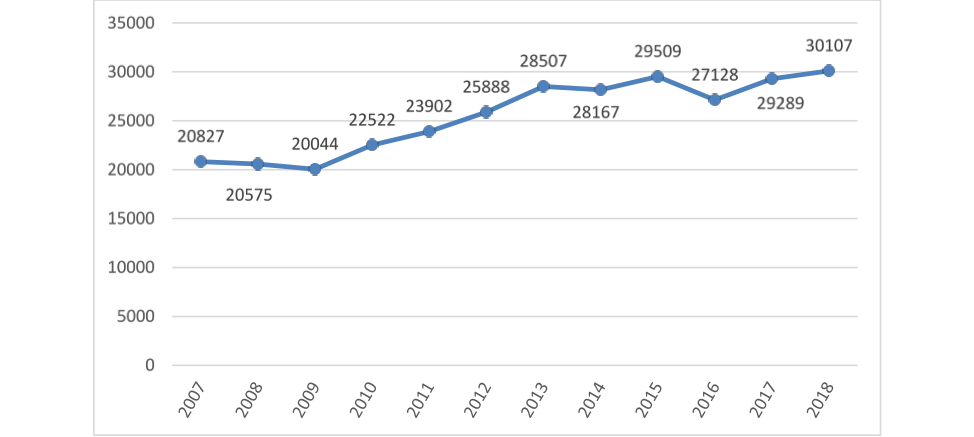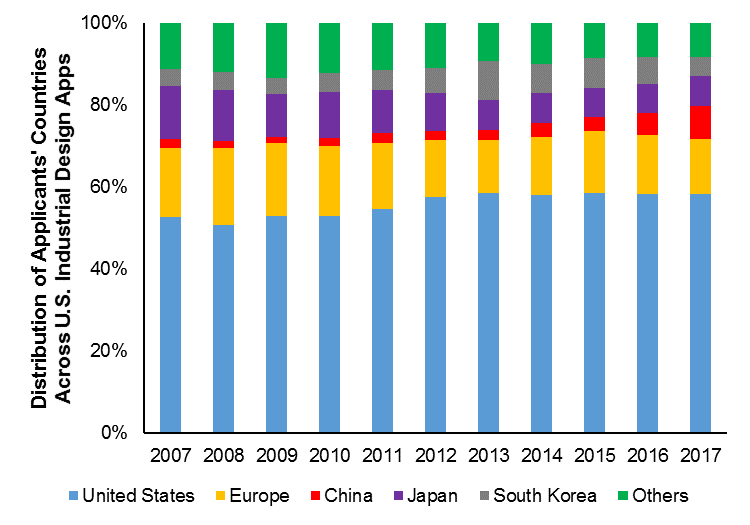“Unlike utility applications, nearly all design patents are allowed with a 99% success rate in recent years.”
This is the seventh in a 13-part series of articles authored by Kilpatrick Townsend that IPWatchdog will be publishing over the coming weeks. The series will examine industry-specific patent trends across 12 key patent-intensive industries.
Yesterday, we looked at trends in the medical device industry. Today’s article pertains to Industrial Design, which was limited to design patent protection.
To quickly summarize this series:
- The goal of the research was to characterize recent patenting trends and statistics for each of twelve industries (and technology clusters within those industries) to inform applicants’ filing decisions of tomorrow.
- The study was conducted at an industry level (not at an art-unit or class level). This was achieved by designing and implementing various queries and iteratively manually reviewing a large number of search results to refine the queries.
- The study is further unique in that we used proprietary data from recent years and data-science techniques to estimate statistics for recent time periods (which would otherwise have poor data as a result of the non-publication time window).
The power of design permeates our consumer economy, from brand reinforcement to artistic style. Design patents sit somewhere between copyright and trade dress to protect ornamental features of useful devices. Consumers can recognize their favorite products by knowing the design language of one car brand versus another, for example. There are also unique design choices that appear in our favorite products, such as the shape of a particular watch or pet product that distinguishes them in a crowded marketplace. In mature markets, utility patent protection can take a back seat to patenting unique design.
The term of a design patent is 15 years from date of grant in contrast with 20 years from issuance for utility patents that are the subject of the 11 other industry areas of this study. Submarine patents are still possible in the design area. Unlike utility applications, far higher allowance rates are expected for design patents, with less effort at the patent office. This higher yield for filings coupled with costs that are about 10% of a utility patent with no maintenance fees contributes to the wild popularity of design patent protection.
Our study not only identified a set of applications that pertained to this industry, but also—for each application in this set—we determined whether the application pertained to one or more of the categories shown in the topology below. If so, the application was appropriately tagged, such that it could be included in one or more category-specific data subsets for subsequent analysis.

Design patent filings for the industry overall have steadily increased after a brief inflection in 2009 corresponding to the great recession, as shown in Figure 1.

Figure 1
Despite the general upward trend in filings, different industries experienced trends as broken out in Figure 2A. The most growth was seen by Automobile & Transportation, Computer and Accessories, Cosmetics & Personal Accessories, and Textile & Clothing product areas. Falling trends were evident in Sports Apparel & Equipment, Medical/Lab Equipment, Home Furnishings, and Computers & Accessories. The trend with Home Furnishings and Computer & Accessories is toward foreign manufacturers, such that the designs innovation has followed those industries.

Figure 2A
The trends in the Graphical User Interface (GUI) area seem more driven by legal factors. After a fivefold increase in filings early in this decade, filings have plateaued as shown in Figure 2B. Design patents to GUIs became very popular after years of very few filings, and lawsuits between 2010 and 2013 awarded significant damage awards to increase their popularity.

Figure 2B
The percentage of filings from domestic companies increased at the beginning of the decade and has held steady since, as shown in Figure 3. Industrial design patent protection is wildly popular in China and accounts for the fivefold patent filing advantage at China’s patent office when compared to the United States. That lust for patents in China is reflected in increased filings domestically from Chinese enterprise, with a six-fold increase over a decade. The growth in filings from China have been offset by a falloff in South Korea’s interest in U.S. design patents.
 Figure 3
Figure 3
For some areas of innovation, design patents are the predominate form of patent protection. The costs are far cheaper while damage awards can be significant. Although the Industrial Design sector is generally filing more design patent applications, that is not consistent across different product areas. We hope that design-focused product companies can use this data to size up this emerging patent space and to help shape their patenting strategies.
A copy of the full published study is available with additional detail here.
This article was updated on May 17 to correct errors in the data.

![[IPWatchdog Logo]](https://ipwatchdog.com/wp-content/themes/IPWatchdog%20-%202023/assets/images/temp/logo-small@2x.png)


![[Advertisement]](https://ipwatchdog.com/wp-content/uploads/2024/04/Artificial-Intelligence-2024-REPLAY-sidebar-700x500-corrected.jpg)
![[Advertisement]](https://ipwatchdog.com/wp-content/uploads/2024/04/UnitedLex-May-2-2024-sidebar-700x500-1.jpg)
![[Advertisement]](https://ipwatchdog.com/wp-content/uploads/2024/04/Patent-Litigation-Masters-2024-sidebar-700x500-1.jpg)

![[Advertisement]](https://ipwatchdog.com/wp-content/uploads/2021/12/WEBINAR-336-x-280-px.png)
![[Advertisement]](https://ipwatchdog.com/wp-content/uploads/2021/12/2021-Patent-Practice-on-Demand-recorded-Feb-2021-336-x-280.jpg)
![[Advertisement]](https://ipwatchdog.com/wp-content/uploads/2021/12/Ad-4-The-Invent-Patent-System™.png)






Join the Discussion
6 comments so far.
Ramón Urteaga
May 10, 2019 05:35 pmEileen: Not to be a pest about this (sincerely trying to be helpful here and for the sake of not misguiding any readers) but the statement is still inaccurate where it states ” . . . in contrast with 20 years from issuance for utility patents.” The correct statement would be ” . . . in contrast with 20 years from filing for utility patents.”
Pro Say
May 10, 2019 12:54 pmThanks Eileen.
Eileen McDermott
May 10, 2019 11:50 amThanks for pointing that out Ramon – I’ve updated the article to indicate that design patent term is 15 years from date of grant.
Ramón Urteaga
May 10, 2019 11:11 am“The term of a design patent is 15 years from filing in contrast with 20 years from issuance for utility patents that are the subject of the 11 other industry areas of this study.” That is an incorrect statement of law. I’m sure it was on oversight by the authors.
Eileen McDermott
May 10, 2019 09:03 amNo info yet, Pro Say – we’ll keep checking.
Pro Say
May 9, 2019 04:32 pmO/T: Gene — any news on the Tillis/Coons 4.9.19 written 5 questions to Director Iancu; the answers to which being due by today, the 9th? :
https://ipwatchdog.com/2019/04/12/tillis-coons-letter-underscores-that-more-can-be-done-to-save-the-u-s-patent-system/id=108180/